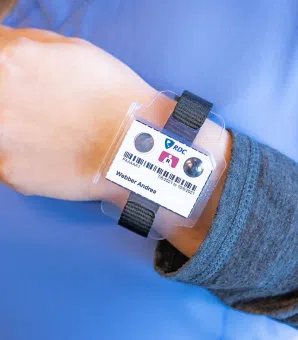
Dosimeter badge services for medical, dental, and veterinary businesses
Learn how Radiation Detection Company’s easy-to-use dosimetry solutions can boost the efficiency of your practice.

Dosimetry Consultant
Last Updated: June 4, 2024
Explore the fascinating evolution of radiation safety and take a deep dive into the history of X-ray badges.
Since its discovery in 1895, radiation has revolutionized science and medicine, although early researchers were unaware of its potential dangers. In this article, we'll dive deeper into the early history behind the modern X-ray badge, starting with the discovery of radiation and later exploring the evolution of safety practices and radiation monitoring.
On November 8, 1895, German physicist Wilhelm Conrad Röntgen discovered X-rays while experimenting with a cathode-ray tube. He noticed that barium platinocyanide glowed when the tube was operating, indicating the presence of unknown radiation, which he called X-radiation.
Röntgen later took the first X-ray images, including the bones in his wife’s hand. He did not patent his discovery – he believed the knowledge belonged to everyone. Röntgen received the first Nobel Prize for Physics in 1901 and continued to dedicate his life to further research.
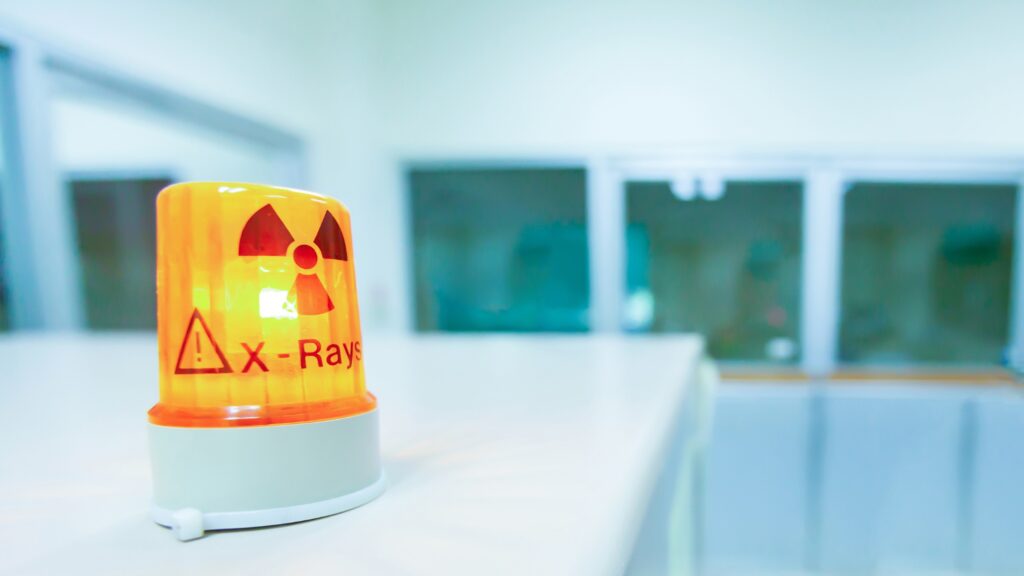
Later, in 1903, Marie Curie and Henri Becquerel received the Nobel Prize for Physics for their work on radioactivity. Before 1903, Curie and her husband Pierre discovered polonium and radium. After Pierre’s death, Marie continued her research, significantly contributing to the development of X-radiography and the establishment of the Radium Institute in Paris. Marie Curie died in 1934 from aplastic anemia caused by prolonged radiation exposure and left behind a lasting legacy in nuclear physics and chemistry.
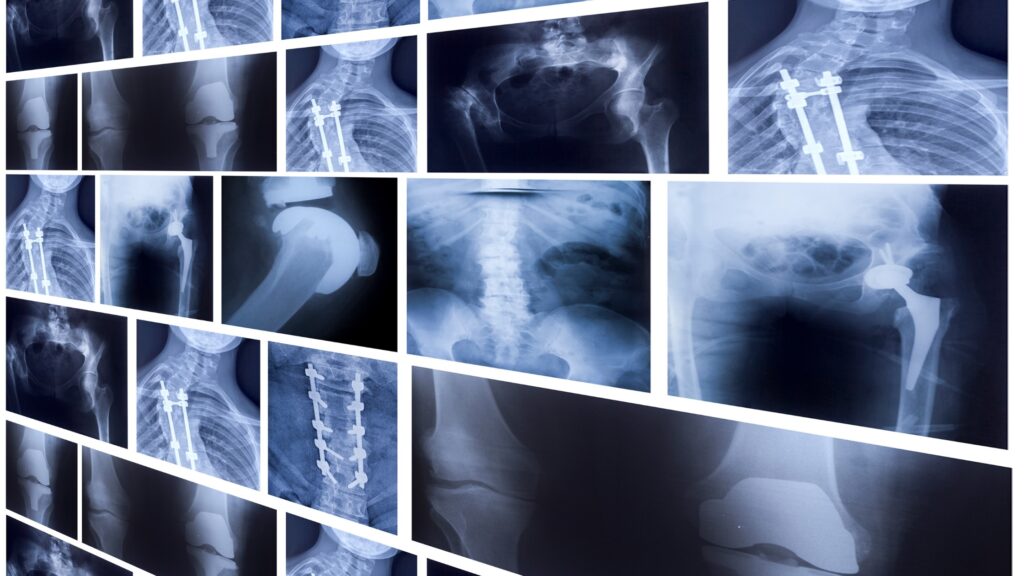
As we mentioned above with Marie Curie, many early pioneers in radiation research suffered severe health issues, with many cases resulting in death. Notable victims included Thomas Edison's assistant, Clarence Dally, who ultimately lost both of his arms due to high levels of radiation exposure, and the "Radium Girls" – a group of female factory workers who painted watch dials with radioactive paint, resulting in more than thirty employee deaths due to radiation poisoning.
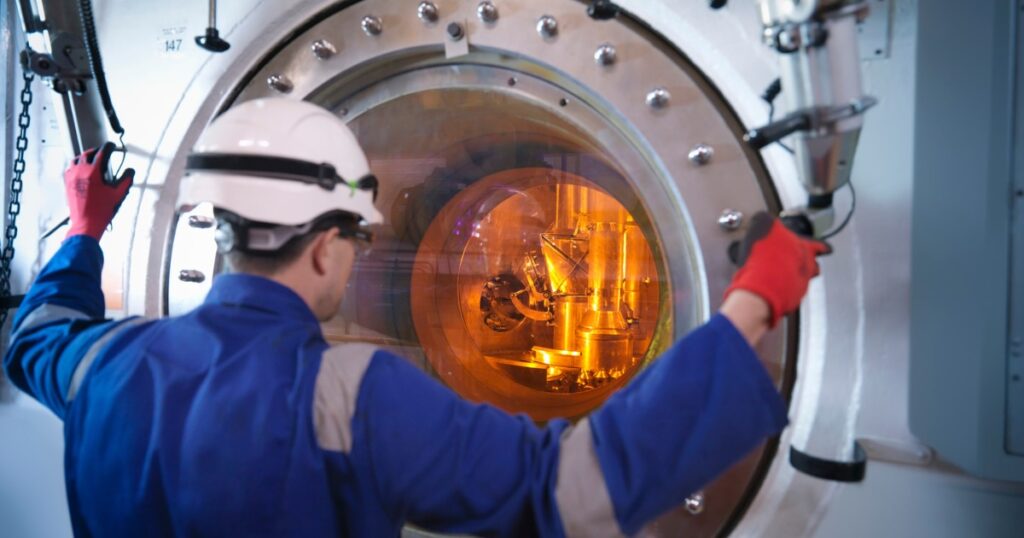
The examples above laid the groundwork for the emergence of radiation protection regulations and monitoring guidelines. Organizations like the International Commission on Radiological Protection (ICRP, formed in 1928) and federal regulatory bodies like the US Nuclear Regulatory Commission (formed in 1974) created guidelines to minimize the risk of radiation exposure and protect employees.
Today, we're more aware of the risks and consequences; we know ionizing radiation can adversely affect the atoms in living cells and damage genetic material. While occasional exposure to low dose radiation may not cause an immediate health concern, it can cause a minimal increase in the cancer risk over a lifetime.
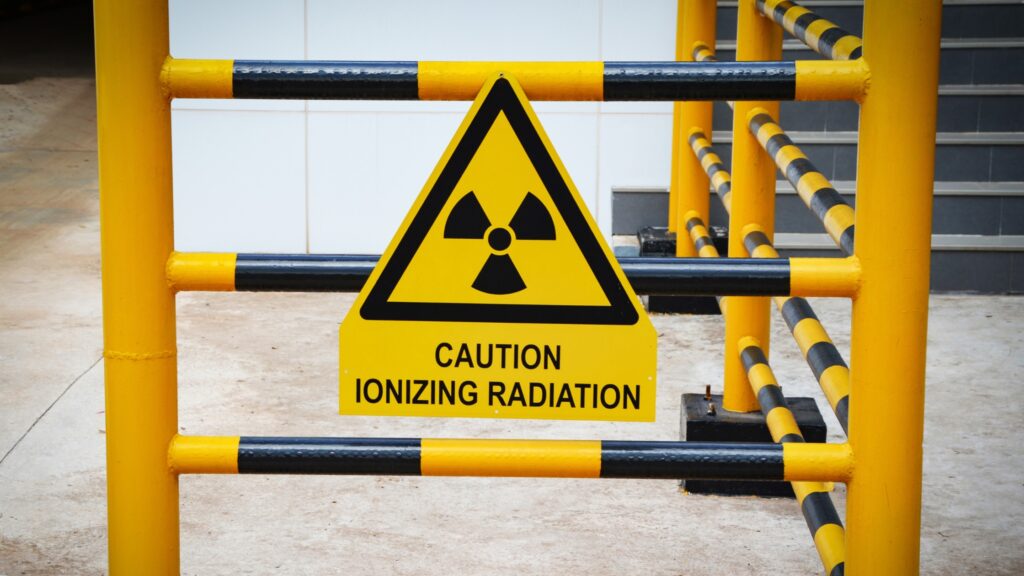
In 1928, Hans Geiger and Walther Müller developed the sealed Geiger–Müller tube. This small device used basic ionization principles to detect alpha and beta radiation, as well as gamma radiation, which prior models had been unable to do. This practical instrument could be produced relatively cheaply, as the tube output required little electronic processing.
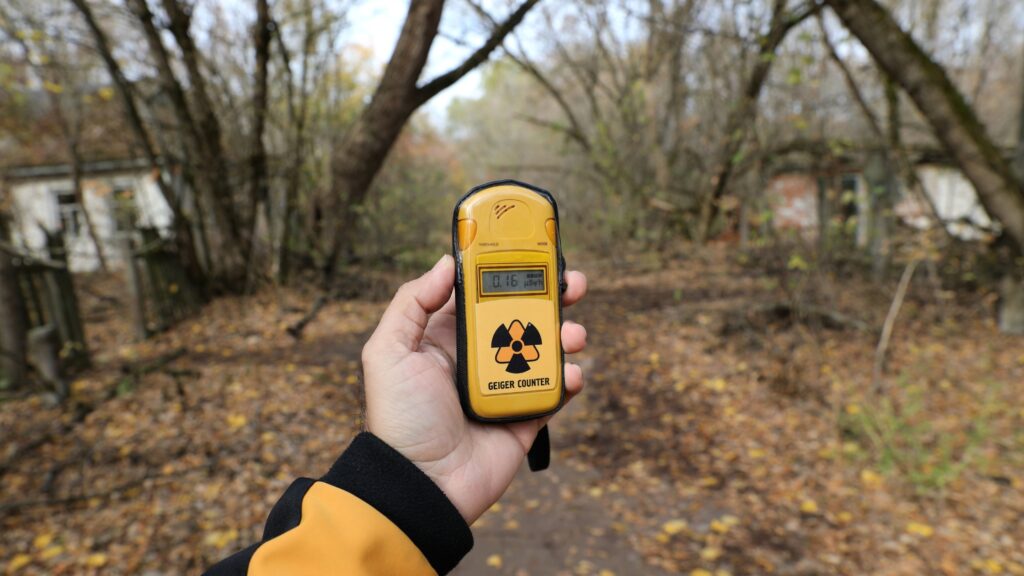
The Geiger counter (as it became known) became very popular as a portable radiation detector due to its portability, accuracy, and low power consumption. Many industries still use Geiger counters to monitor ionizing radiation.
Scintillation detectors (or scintillation counters) detect and measure the energy response using scintillating material that emits light when exposed to radiation. A photodetector then translates the light into an electrical signal to measure ionizing radiation. Sir Samuel Curran invented the first electronic scintillation counter in 1944 at the University of California at Berkeley.
Employees working in settings where medical radiation is necessary often wear personal protective equipment (PPE) like lead aprons or vests, lead thyroid collars, lead gloves, and safety glasses. For more on the different types of PPE, please check out our guide on materials that block radiation.
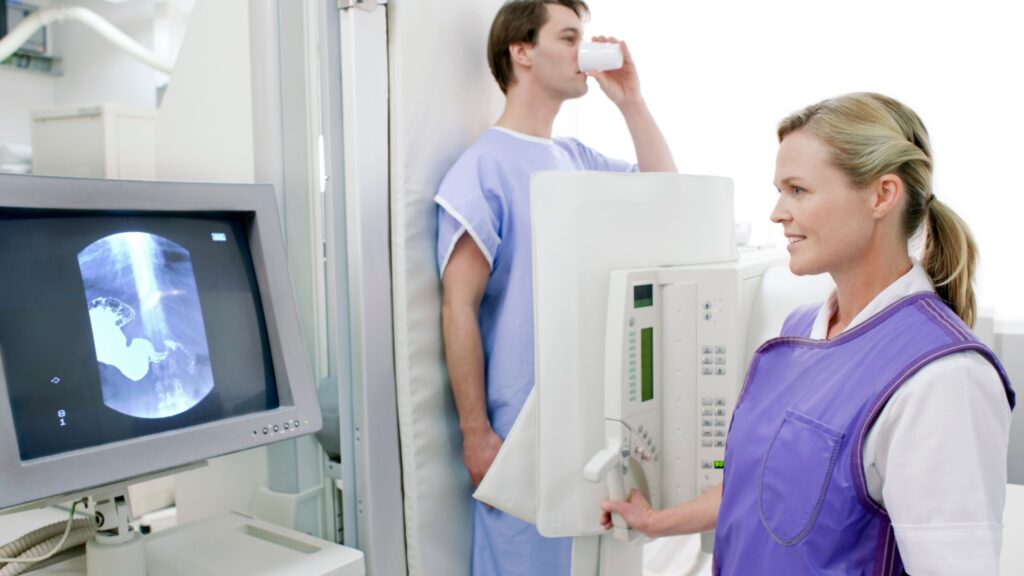
A dosimetry badge – also commonly called a personal dosimeter – measures the absorbed dose of ionizing radiation for employees in occupational contact with radioactive material or radiation-emitting equipment. Radiation monitoring badges are the main component of dosimetry, which is the accurate and systematic measurement, calculation, and assessment of the radiation dose absorbed by matter or tissue.
The introduction of the dosimeter badge was vital in tracking occupational radiation exposure and subsequently improved workplace safety for radiation workers in various fields, including nuclear power plants, dentistry, research, healthcare, and veterinary practices.
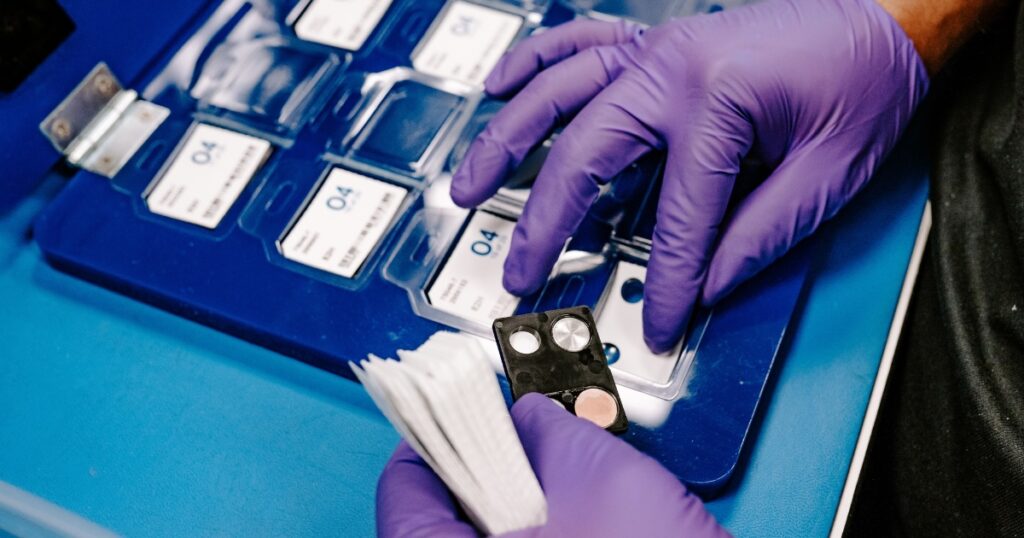
A dosimetry badge service helps each employee to measure their exposure over time. After collecting and processing the badges, the dosimeter badge service analyzes the results and provides dose reports for each badge wearer. Radiation safety managers can use these dose reports as a guide to evaluate the potential risk of overexposure and avoid breaching occupational dose limit thresholds.
We'll explore each dosimeter badge type in the section below.
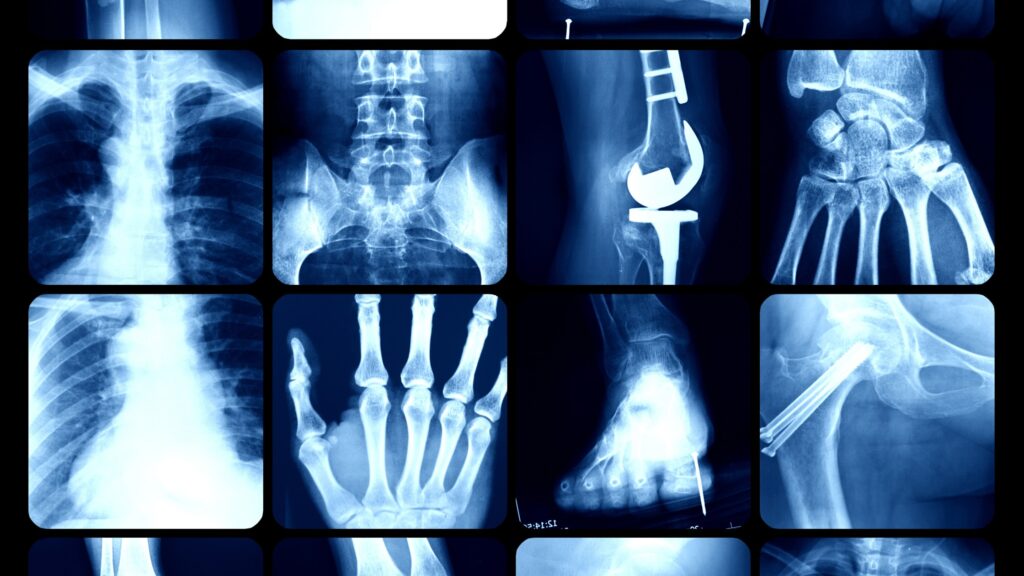
Film badges, the earliest form of personal dosimeters, used photographic emulsion to measure radiation exposure levels. Early film X-ray badges were not very sensitive and were easily impacted by adverse environmental conditions like temperature and humidity. They also had to be exchanged every two weeks to be processed and analyzed, with results recorded on index-sized dosimetry cards.
In 1979, an early computer system replaced dosimetry cards, and thermoluminescent dosimeters using crystalline materials such as lithium fluoride and calcium fluoride replaced film badges in 1994. Most commonly worn on the torso, a TLD badge provides a more accurate and reliable measurement of occupational dose than the film badge predecessor.
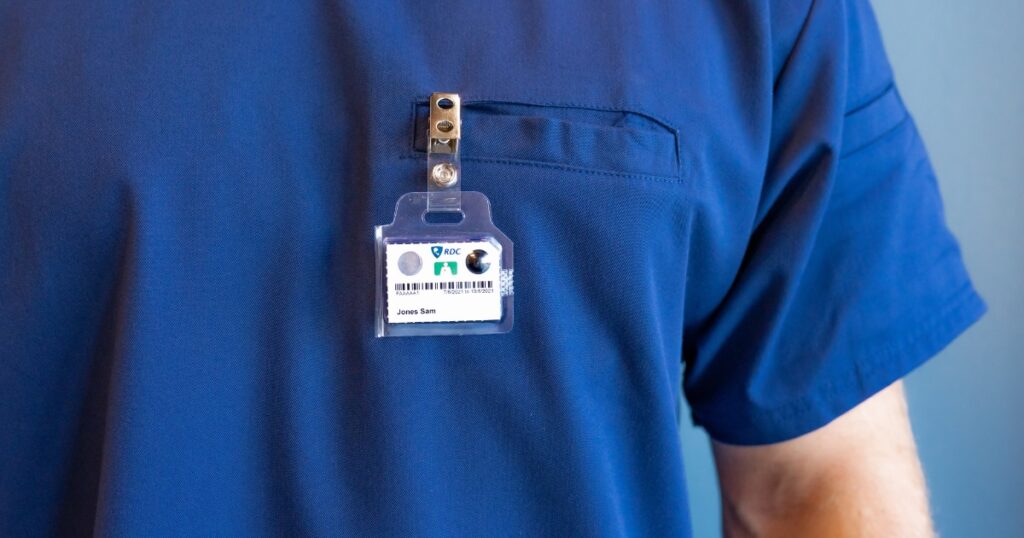
Later, in 1998, optically stimulated luminescence (OSL) dosimeters were introduced. The material makeup of an OSL dosimetry badge is very similar to a TLD and is composed of crystalline solids activated by a light source. TLD and OSL dosimeters capture point dose measurements in a relatively small volume.
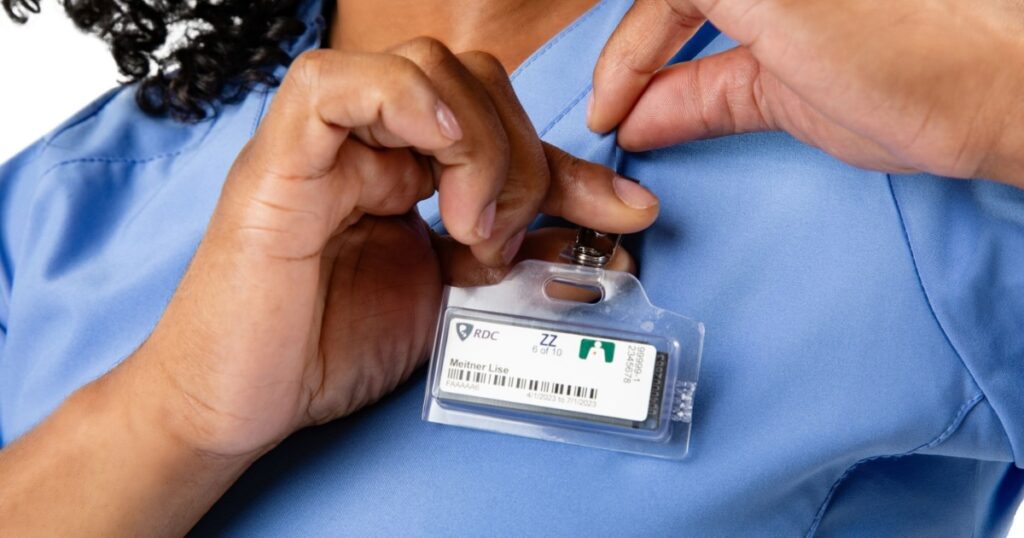
Radiation Detection Company has provided quality dosimetry monitoring service to over 28,000 companies nationwide over the last 75 years. Our long history of safety and innovation makes us the cornerstone of an affordable radiation monitoring service for organizations of all sizes and industries.

Need help understanding what kind of dosimeter your organization needs? Call RDC at 512.831.7000 and get reliable dedicated care today.
X-ray badges are more commonly called dosimeters. There are several types of dosimeters, including film badges, thermoluminescent dosimeters (TLD), optically stimulated luminescence dosimeters (OSL), and digital dosimeters.
Employees must wear radiation badges if their total effective dose equivalent is likely to exceed 10% of the US Nuclear Regulatory Commission's limits (5,000 mrem per year for whole body). While other regulations may vary by state and industry, the NRC requires radiation badges for any employee likely to exceed 500 mrem per year.
Radiation badges are a common safety requirement for healthcare workers, especially in fluoroscopy and other imaging services, as well as dental employees, veterinary staff, and nuclear energy workers.
X-ray safety awareness began after Wilhelm Conrad Röntgen discovered X-rays in 1895. Reports of radiation "burns" and other injuries emerged as the medical community quickly adopted X-rays for diagnostic purposes, prompting the need for safety measures.
By the early 1900s, guidelines and protocols for X-ray safety started to develop, including recommendations for shielding and limiting exposure. Organizations like the International Commission on Radiological Protection (ICRP) and the US Nuclear Regulatory Commission (NRC) further developed and implemented formal regulations and standards for radiation protection starting in the 1920s.
Physicist George R. Heaton developed the film badge in the 1950s. Heaton's work significantly improved radiation monitoring by providing a more accurate and reliable method for measuring radiation exposure.
Learn how Radiation Detection Company’s easy-to-use dosimetry solutions can boost the efficiency of your practice.